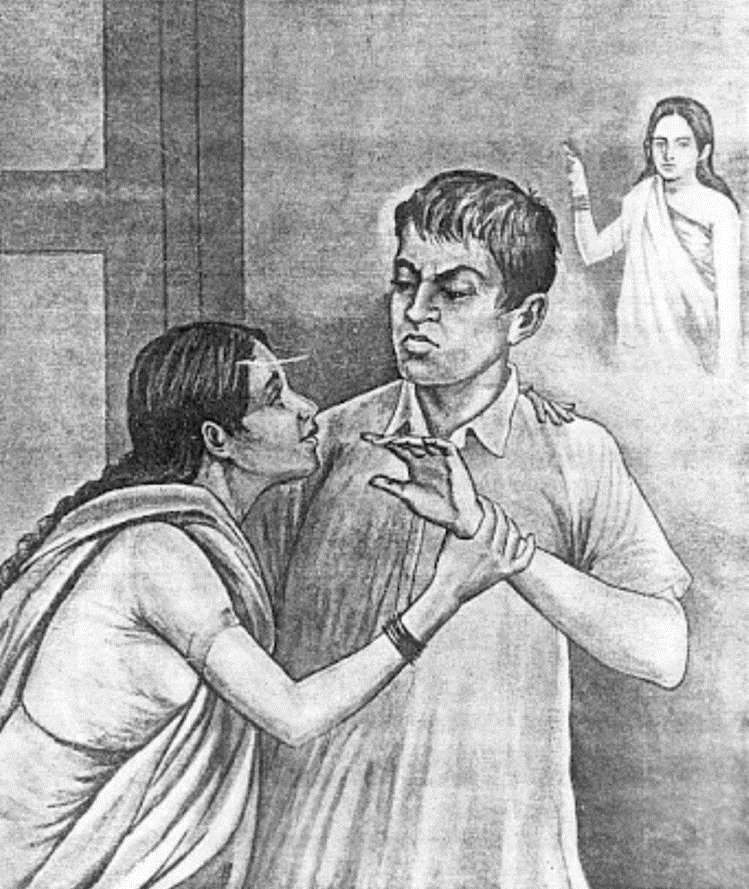Picture Perception and Discussion Test (PPDT) in SSBs is conducted on Day-1 and is the second objective of Stage-I tests. PPDT is a screening test which is almost an elimination test of the candidate. It is conducted to know about the imagination power and description ability of a candidate within a limited time allotted.
Thematic Apperception Test (TAT) is one the psychologist tests conducted on Day-2 of the SSB. It is one of the Stage-II tests; candidates who get screened-in, are retained for stage 2 testing. This test is geared to know about the intellectual, cognitive, emotional and behavioural functioning of the candidates and identify their intelligence, personality style, interpersonal processes and adaptive skills.

Sample TAT & PPDT Story 1
Ramesh, a young police officer, was investigating a case of false accusations against a poor woman. The woman was framed by an influential businessman who wanted to silence her for exposing his illegal activities. Desperate for justice, she reached out to Ramesh for help. The woman pleaded with Ramesh, urging him to take action. Despite the pressure from powerful figures, Ramesh assured her that he would investigate fairly. He faced resistance from corrupt officials, but he remained steadfast in his duty. Ramesh gathered evidence meticulously, spoke to witnesses, and even approached higher authorities to ensure a fair trial. He strategically leaked the truth to the media, preventing any cover-up. His relentless efforts led to the businessman’s arrest. The woman was acquitted, and Ramesh was honored for his bravery. His integrity strengthened public faith in law enforcement, inspiring many young officers to follow his example.
Sample TAT & PPDT Story 2
Vikram, a passionate social worker, was conducting awareness programs about women’s rights in a conservative village. He came across a woman who was being forced into an unfair marriage. The woman, distressed and helpless, sought Vikram’s help. The woman begged Vikram to stop the marriage. However, her family was adamant, believing it to be their tradition. Vikram calmly explained the legal and social consequences of forced marriages but faced opposition. Vikram sought support from local authorities and a women’s rights NGO. He educated the villagers about the importance of choice in marriage and women’s empowerment. His persistence convinced the family to reconsider, and he helped the woman enroll in a government welfare program for skill development. The forced marriage was stopped, and the woman became independent. Inspired by Vikram, many villagers started advocating for women’s rights, leading to positive social change.
Sample TAT & PPDT Story 3
Amit had returned home after completing his studies, only to find his elder brother neglecting their widowed mother. His brother, burdened by responsibilities, saw her as a liability and refused to take care of her. Amit was heartbroken by his brother’s indifference. The mother, in distress, pleaded with Amit to help mend their family bond. She was emotional and helpless, fearing abandonment. Amit, determined to resolve the issue, took matters into his own hands. Amit sat down with his brother, reminding him of their mother’s sacrifices. He arranged for financial support through government pension schemes and sought emotional support from relatives. Slowly, he changed his brother’s perspective, making him realize his duty. The family was reunited, and the elder brother started caring for their mother. Amit’s efforts ensured that she spent her later years with dignity and happiness.
Sample TAT & PPDT Story 4
Dr. Rajesh had recently been posted in a rural hospital. One night, a poor woman rushed in, pleading for her child’s life. Other hospitals had refused to treat him due to lack of money, leaving her with no hope. The woman, in tears, held onto Dr. Rajesh, begging him to save her child. He immediately examined the child and realized that immediate medical attention was required. Despite hospital policies, Dr. Rajesh admitted the child and began treatment. He arranged medicines through donations and convinced his colleagues to support the case. He also connected the woman to a government health scheme, ensuring continued care. The child recovered, and the mother was overwhelmed with gratitude. Dr. Rajesh became a respected figure in the community, and his selfless service inspired others in the medical field.
Sample TAT & PPDT Story 5
Neha, a young journalist, was investigating rising cases of domestic violence. During her research, she met a woman who had been silently suffering for years. The woman was afraid to speak out against her abusive husband. The woman, with tears in her eyes, pleaded for help, fearing for her life. Neha assured her that she would fight for justice and expose the truth through her investigative journalism. Neha gathered evidence, documented witness statements, and collaborated with a women’s rights NGO. She published a powerful article that gained public attention. Legal authorities intervened, and the abuser was arrested. The woman was given shelter and legal support, and Neha’s report led to stronger domestic violence laws. Her fearless journalism empowered many other victims to speak up.



















